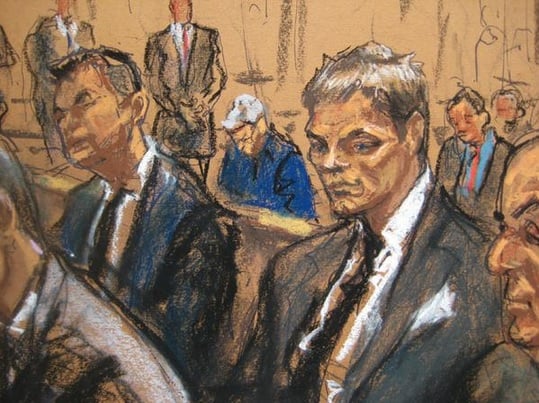Dave Clark's defense contended that the developments were legitimate and only collapsed because of the financial recession, not due to any criminal wrongdoing. The attorneys for Cristal Clark, meanwhile, said she relied on her husband and his financial advisers and committed no crimes.Congrats to the FPD's office and to Aimee and Alex.
In June 2014, Dave Clark was extradited from Panama and Cristal Clark from Honduras to face the U.S. charges. Both have been jailed as flight risks ever since. After Cay Clubs failed, Dave Clark and two partners formed a Cayman Islands-based company that opened a string of pawn shops across the Caribbean known as CashWiz.
Some of the fraud charges against the Clarks stem from that business, with prosecutors contending the couple were illegally siphoning off for themselves cash the company was making buying and selling gold.
This is a good example of why judges are too harsh with bond. It takes a lot of courage and perseverance to wait in jail over a year to try your case. The New York Times covered the bail problem with a front page story here. The story focused on low-level indigent defendants, but it's really a huge problem in all cases as judges have become more and more stingy with bonds, even for first-time non-violent offenders.
In other news, Judge Diane Ward is really cool. She is collecting and showing courtroom sketch work from well-known federal trials in Miami. This is an awesome project. And thankfully, the sketches don't look like this one! From Dave Ovalle and picture by Emily Michot:
For many young lawyers who dart down the halls of the criminal courthouse, the history of Miami-Dade’s legendary legal dramas — along with the names of famous lawyers and often infamous defendants — might ring unfamiliar.
There was Ted MacArthur, the ex-homicide detective who murdered his wife in 1989. Joseph Hickey, the son of a Miami judge, who tried to extort $2 million in a bizarre kidnapping hoax. And Al Sepe, the Miami judge who did 18 months in prison in the notorious “Court Broom” judicial corruption scandal that erupted in 1991.
“It was the second-biggest corruption scandal in the nation’s history, and no one remembers it,” said Miami-Dade Circuit Judge Diane Ward as she walked down a hallway behind her courtroom.
Thanks to Ward, the enduring images of those and other important trials — sketched in bold pastel strokes by South Florida courtroom artists — now hang in a hallway behind her fourth-floor courtroom at the Richard E. Gerstein Justice Building. For the judge and lawyers who recently loaned her framed sketches, the corridor has become a mini-museum documenting not only the cases of yesteryear but the fading art of courtroom sketching.




